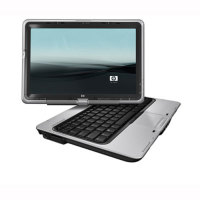Touch screen technology isn’t new. You’ve likely been using it for years on your laptop or notebook in the form of a touch-sensitive pad, or mouse. Until recently it’s proven difficult to get usable, reliable, interactive capacity on laptop and notebook screens.

Three of the problems were hardware related. The first was that the translucent array of grid squares that overlays a touch capacitive screen required the user to press quite hard for the touch to register, causing input to be slow and unreliable. The second was that batteries for portable computers weren’t up to the challenge. A touch screen display is a power hungry beast, draining typical laptop batteries inside an hour.
On the software side, operating systems for a potential touch screen laptop simply couldn’t handle the increased demands of touch input. Software support was often patched into an OS rather than being part of its core design, and it showed in slow, clunky response times and frequent system crashes.
Recent innovations, however, have brought that age to an end. The proliferation of smart phones, PDAs, and tablets with touch-interactive screens has translated directly into better hardware and software for larger computing machines. Most manufacturers have been racing to be the first to bring a durable, reliable touch screen laptop to the market.
Coupled with the recent release of operating systems that were built to handle the demands of the new technology, touch screen laptops have finally arrived. Costing only a few hundred dollars more than standard-input , they offer their owners the same multi-touch capabilities available on modern smart phones.
It’s more than just tapping to select items or navigate down a page. Need to zoom in on an image? Put your thumb and forefinger on the screen and move them apart. Would you like that display rotated? Place your thumb on the screen and rotate your forefinger around it. How about deleting a file? Simply “flick” it off the screen!
Virtual keyboard software has also seen great improvements in the past few years. This kind of input on a touch screen laptop will allow you to tap the screen to type or even to “swipe” your finger over the keys in patterns to make words and sentences. Those who’ve mastered them report an amazing increase in virtual typing speed.
Now is the time to upgrade to a touch screen laptop, and take your portable computing into the 21st century.
